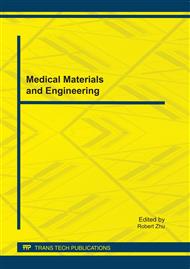p.385
p.394
p.400
p.406
p.411
p.416
p.421
p.426
p.431
Preparation, Partial Isolation of Antifreeze Peptides from Fish Gelatin with Hypothermia Protection Activity
Abstract:
Antifreeze proteins have characteristics of inhibiting the growth of crystals, decreasing the injury of cells and can retain the structure, texture and quality of productions. The purpose of this study is to obtain natural antifreeze peptides, and to investigate the hypothermia protection activity on bacteria. Gelatin derived from shark skin was hydrolysed to obtain antifreeze peptides. The most appropriate protease and hydrolysis time was selected with the index of the hypothermia protection activity on bacteria. The hydrolysate was subsequently added on to Sephadex G-50 gel filtration column and SP-Sephadex C-25 column to acquire high activity fractions. The fraction of cationic peptides termed P2 shows higher antifreeze activity. The hypothermia protection assay shows that the survival rate of E.coli was 80.8 % when the concentration of peptides complexes was up to 500 μg/mL.
Info:
Periodical:
Pages:
411-415
Citation:
Online since:
November 2011
Authors:
Keywords:
Price:
Сopyright:
© 2012 Trans Tech Publications Ltd. All Rights Reserved
Share:
Citation:


